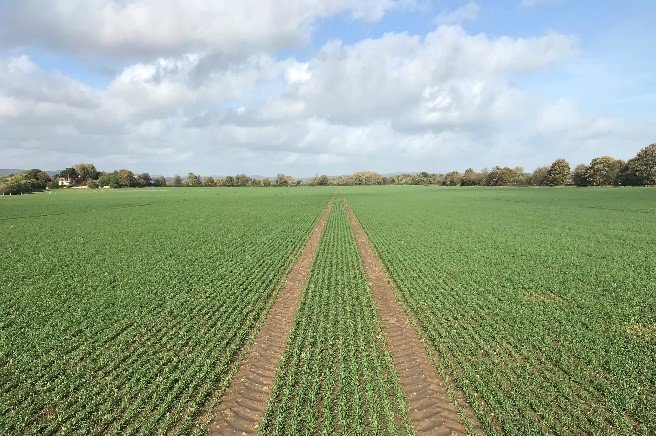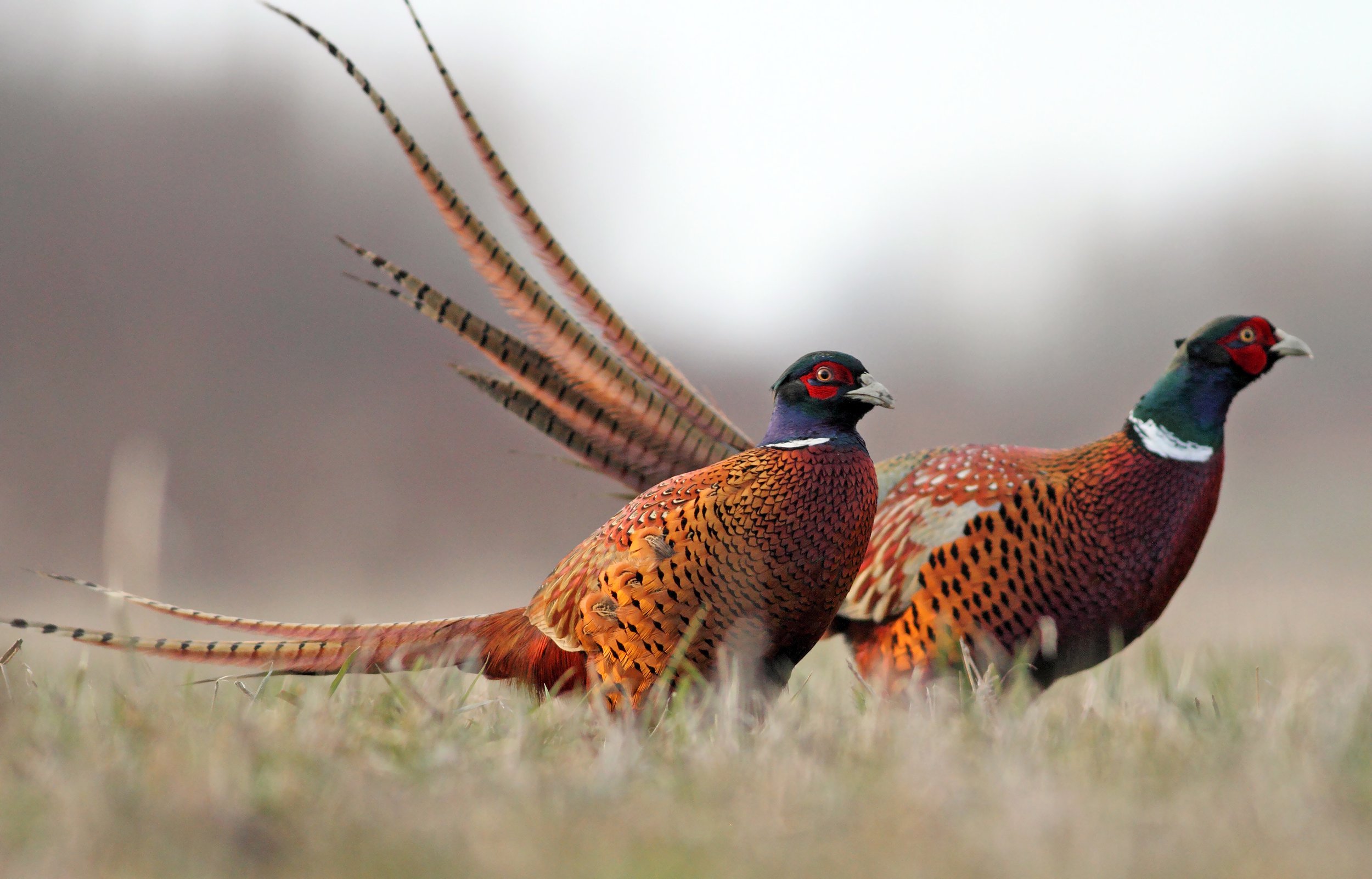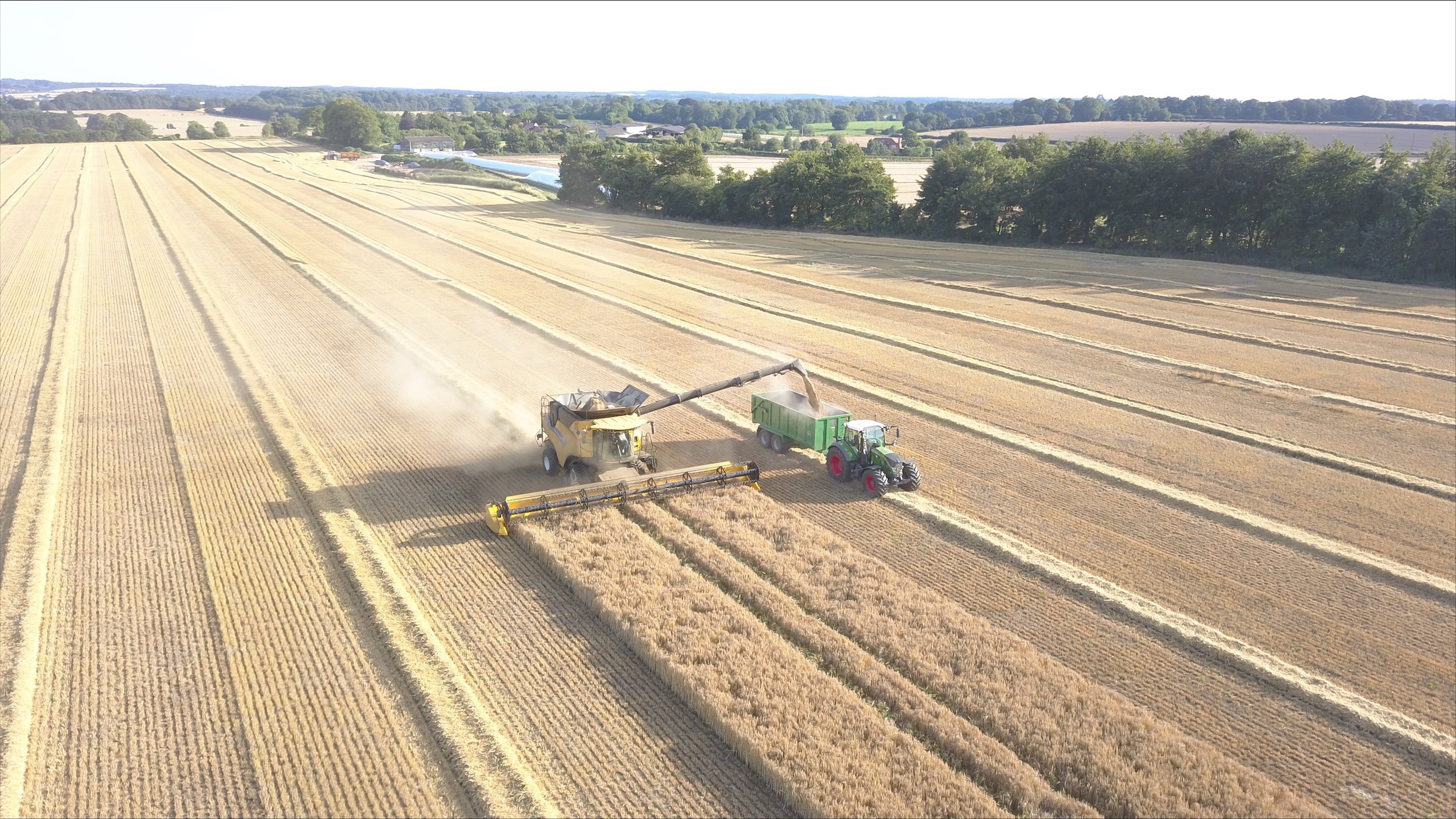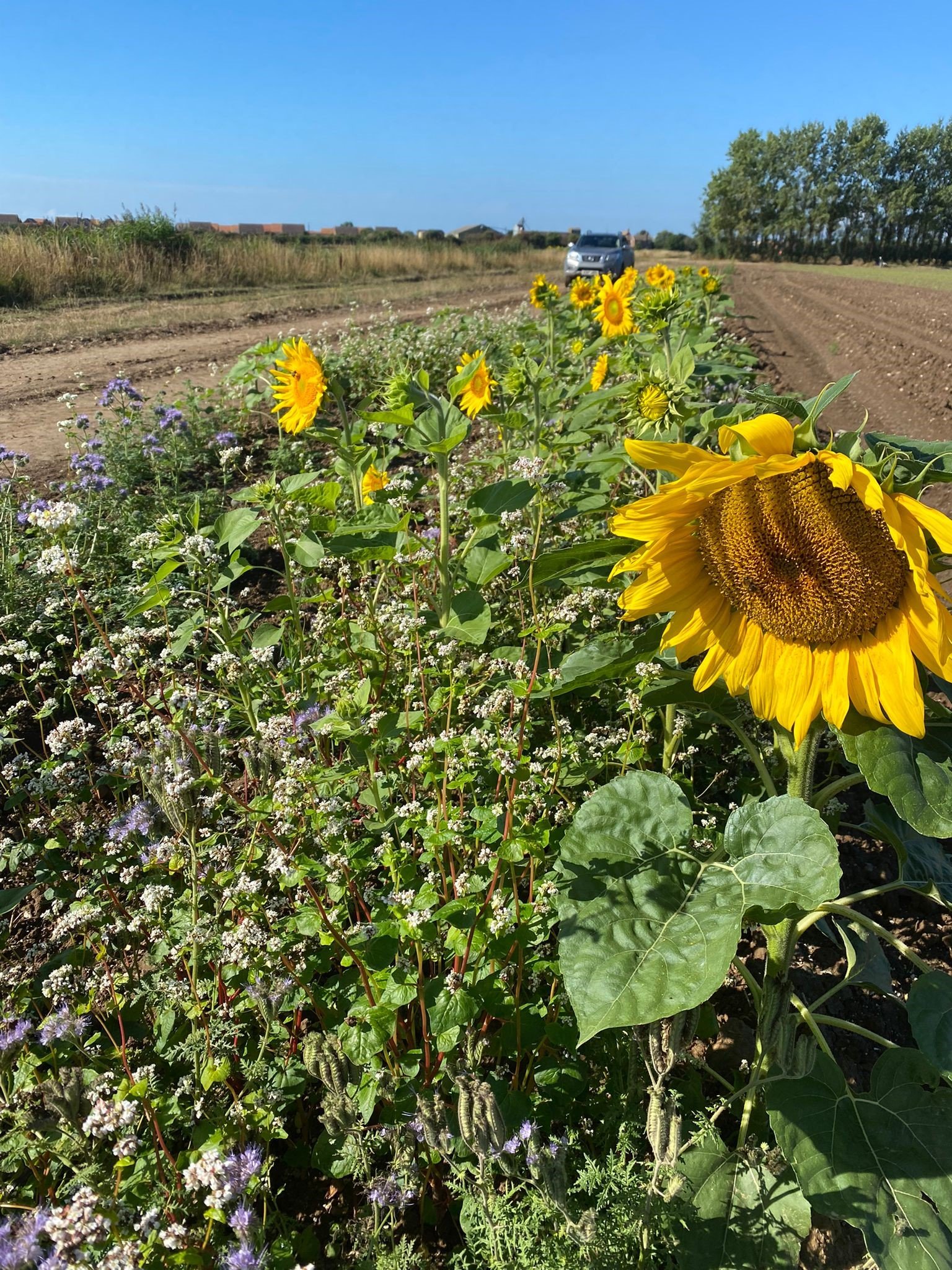Bartholomews 2022 yearly summary
Agronomy
It all seems such a long time ago now but casting our minds back to the Autumn of 2021 when the crops were established, despite the wet weather at times, the usual dedication from all saw the jobs completed to the highest standards possible.
Oilseed Rape was the usual emotional roller coaster with unexplainable success and failure some-times in fields next door to each other but in general, crops were established well going into the Winter with strong growth above and below ground. Cereal drilling campaigns went well with planned herbicide applications made in good time, and with favourable growing conditions these crops had the chance to develop some very strong root systems going into the Winter. For all Arable crops, this below ground growth would prove to be essential in the following year.
Coming out of the Winter, crops looked generally well, but there was much discussion early in the season regarding fertiliser strategy. We had seen the first of the price increases in Nitrogen fertiliser which provoked a lot of questions around rates, application strategy, cost vs returns, etc, but when commodity values began to rise and balance things out there was a clear path through to reach a satisfactory result. Disease levels were low in most crops in the early Spring and with the weather being drier, it would have been easy to relax and settle into “routine” when new growth began. The first indicators came from our cereals research sites, (which benefit from being well spaced out regionally) where some wheat varieties began to show signs of yellow rust very early. Empowered with this information we were able to start the crop protection programmes with the correct product choices and dose rates building a strong preventative base for what was to come. Oilseed Rape got off to a good early start in the Spring with the strong roots built in the Autumn drawing moisture and nutrients, and looked as good as ever going into the flowering period.
Early Spring seed beds were ideal for early establishment of Wheat, Barley and Oats’, these conditions would deteriorate as time progressed when the weather pattern fully unfolded. Later planted cereals struggled to get going and the importance of seed rates really came to the fore with the higher rates returning the better yields. Deeper planted crops of Peas, Beans and Maize, planted within the usual timescales, benefited from the moisture they found and with the consistently warm soil temperatures, these all got off to a good start. Later planted crops really struggled to get established due to lack of moisture.
The weather patterns became increasingly drier and the next key crop to suffer was Grassland. Planned first-cuts of Silage were noticeably lighter than usual due to lack of moisture and grazing grass was beginning to burn up on the lighter soils at a very early stage, to be followed later by the heavier soils with grass being almost non-existent over the main summer months.
Throughout the main growing months, the Winter cereal crops grew very well, largely down to the afore mentioned root systems built in the previous Autumn, and on all but the lightest of land came to ear looking well. Observation remained vital, local rain showers, heavy dews, green crop canopies and field topography can create microclimates where disease can spread. The growing season was also a testament to the new chemistry we now have available to us and the multiple benefits that they bring of improved disease prevention and control, persistence for longer than we have seen before and their physiological benefits which help to improve the plants general resilience they are a proper step forward.
The drought was well and truly entrenched with us by the time crops came to their respective Grain/Pod or Cob filling stages. Thoughts of the previous year where we had a grey and dull finish to the growing season which had impacted greatly on results, were on a lot of people’s minds and whether this season’s extremes would have a similar effect. Thankfully the sunshine was well converted by crops into specific weight, and we saw some very good yields indeed. Quality was slightly affected in the wheat crops largely due to the increased. Would that extra 20 kgs we reduced by earlier in the season have made the quality difference? Hindsight is a wonderful thing! Harvest was gathered largely earlier than usual without having to fire up the drier which brought some welcome savings.
Maize crops however, despite their sun-loving growth habits and promising start struggled to pollinate properly in the extreme temperatures and dry conditions. The resulting harvest wasn’t up to previous years, later planted crops were very poor indeed.
The rains came in time to help successful establishment of Grass seeds, Stubble turnips and OSR and it also gave us the chance to produce some of the best stale seed beds for several seasons with more than one good flush of weeds produced.
The recent Autumn cereal seedbeds were again first-class, great attention to detail saw drilling and weed control largely completed in a timely manner on all but the heaviest of land for which there are still drilling opportunities in the post-Christmas period. In common with the Spring season there was a large usage of new herbicide chemistry into Winter wheat and Winter Barley this Autumn and the initial results look encouraging and another forward step.
- Andrew Stillwell
Feed
It has been a bit of a turbulent year in the feed department with soring feed prices across the board and increasing costs in manufacturing and haulage to boot. Richard and I have worked away to capitalise on any slight dips in the market and considering the obstacles, we’ve had a fairly steady year on the straights side. Richard also continues to run the Brewers grains and although the supply is not always consistent, he always endeavours to keep our regular customers supplied with grains throughout the year.
We continue to have a successful trade in traditional straights, minerals, liquid feeds and fats along with maintaining competitive compound feeds pricing.
November marked 1 year since we launched our own brand Layers pellets and Layers mash; this business has grown steadily through this year and hopefully will continue to do so for a long time to come.
In October we were delighted to be exhibiting at the Southwest Dairy Show. It was lovely to catch up with existing and welcome new customers.
With 2023 just around the corner we would like to thank all our customers for their continued support throughout the year and we look forward to supporting you going into 2023 and beyond
-Lavinia Jones
Game Feed
Game feed season 2022 has been very challenging to say the least, with the outbreak of the war in Ukraine driving up prices and then the outbreak of bird flu affecting the supply of birds from France. At times, Craig and I felt like we needed a crystal ball to try and predict how the season was going to go, and with all these challenges you can imagine it was a very difficult year to schedule manufacturing and deliveries due to the uncertainty of bird supply. With many shoots getting birds cancelled at the last minute and equally some getting birds at the last minute, myself, Craig and CFS had to move mountains to be able to make sure everyone got their feed when they required it.
Considering all the obstacles we have had a good year, and this is largely due to Craig being the person on the ground and having such a good close working relationship with his customers, so we could react when needed. The advantage of having our own transport meant we could be more flexible, although I’m sure Barry, Jody and Ritchie wanted to tear their hair out at times. Together as a team we got there, and all customers supplied. We thank you for your continued support and patience through what was a very challenging and uncertain season, and we hope 2023 might prove to be easier.
- Lavina Jones
Grain
No one involved in the marketing of grains will be forgetting 2022 in a hurry, will they? A year that saw new price highs set in all markets and whilst no one sold everything at the top, (or the bottom,) there was ample opportunity to lock into some healthy values for much of the Year. Of course, high prices are invariably associated with high input costs, making the farmers marketing responsibilities an ever more demanding task but having a bursting full barn certainly makes the job easier. Hopefully everyone will have managed to secure some excellent returns which will provide some security against the likely volatility still ahead of us.
With so much market excitement it would be easy to forget the doubts attached to the UK crop as harvest 2022 approached and the thermometer clipped 40 degrees briefly (a record we could have done without). The extreme heatwave towards the end of the summer drought did considerable late damage to our neighbour’s crops on the Continent and we could not be sure that our own crops would escape. Surely the spring crops would be compromised if not the winter ones as well? In the event, we produced a truly vintage crop, yielding well and with bushel weights to dream of including 84kg wheats and 60kg oats. Crops of this standard are so much easier to market especially when no one else has anything to compare.
The UK has now established a multi-year reputation as an exporter of very high-quality spring malting barley and, our oats are gradually gaining recognition also. But there is still work to do in promoting UK milling wheats to the Continent, as UK growers are tempted away from the soft Group 3 wheats the market really wants. Establishing a regular pattern of trade for low grade UKP types is no easy task but years like this one help enormously as buyers see what is possible when conditions allow the crop to perform.
No one wishes to profit from the suffering of others, and especially at this time of year our thoughts are with those enduring great hardships in Ukraine. Seeing some shelves empty in our own supermarkets this winter hardly bears comparison, but it does bring home to everyone that food security cannot just be taken for granted in the way we all thought. We are all interconnected wherever we are in the world, and the importance of the work you all do as farmers has never been more vital.
-Richard Wright
Crop Protection
2022 was going to be a tough year to secure adequate product volumes at the right time. We had to deal with driver shortages, ongoing global COVID issues, massive increases in logistics costs, delays at UK ports and then the European drought causing havoc with barge traffic up and down the Rhine due to low levels of water.
A large acreage of winter crops had been drilled during the previous autumn of 2021. Crops had established well and a dry autumn had forced plants to produce a good root system which was going to be a crop saver when very warm and dry conditions occurred during the growing season. Most crops yielded very well and were easy to harvest due to the hot summer weather.
During the summer months the agronomy team added further BASIS environmental qualifications to their portfolio, which means they are ready for the future industry challenges ahead to maximise food production, while being conscious of environmental pressures.
Our independent research programme was the biggest and the most successful yet. We have been working with industry partners such as ICL, Southern Water, Oat Millers, BASF, Syngenta, Corteva and Bayer. Trial sites, numbering 1000’s of replicated plots, have been located all over the southern region looking at new cereal varieties, new fungicide chemistry, cover crop mixtures, how to achieve maximum yield from minimum nitrogen applications, slow-release fertiliser and treated urea technology, getting the best results from biostimulant applications and much more!
-Graham Phillipo
Seed
Maize harvest wasn’t hit as hard as expected and has filled in the low forage stock gap boosting starch and digestibility in rations this month. The lower grass yields have resulted in an increased demand for 2023 maize where we’ve been able to offer a comprehensive list of varieties to meet different needs.
We’ve also been running extensive trials on cover crops, working with other breeders where findings included, improvements to soil structure, reduced erosion and run off.
Companion crops is showing a reduced incidence of flea beetle in Oilseed rape, along with providing canopy cover and root pathways along with being a deterrent for flea beetles.
With a wide range of stewardship options, there has been something for everyone. From winter bird food mixes, flower rich margins to legume rich swards and beetle banks. For Gamecover, the winter bird food mixes are doing well providing small seeds throughout the winter.
Grass growth figures were looking forward going into April however May onwards saw long periods of dry weather resulting in lower yields than normal however growth started to recover in September and October, supporting an extended grazing season with decent ME and protein levels.
Customers also saw a positive effect of adding of Plantain & Chicory into leys resulting in rooting diversity and protein content.
The Autumn seed season was dominated by Extase and two new feed varieties, Dawsum and Champion. We believe caution is needed next year as there appears to be too much area down to too few varieties raising risks. But fresh blood is still needed in Goup 1, and Group 3 needs a varietal boost as well, as a large number of new varieties are still not delivering a perceived advantage.
Market conditions will likely dominate variety choice in 2023 but large premiums for growing quality they remain attractive for growers with the ability to achieve the qualities required. Spring malting barleys will still dominate in our region and this season has seen Laureate now moving to be the dominant variety but with Planet still in strong demand. New malting varieties Skyway and Diablo have not yet taken off and previous hopeful Tungsten is now a sensible feed option. Spring Oat Isabel has proven popular for its outright yield however new variety Lion is likely to be in demand from processors due to its high Kernel content, almost matching Mascani. We don’t anticipate a strong demand for spring wheat this season but have old favourite Mulika available. Demand for Spring Beans has been strong so far this season and we are supplying new variety Raptor alongside the established favourite Lynx. We are also offering the Large Blue Pea Karioka.
-Lucy Ford
Fertiliser
Fertiliser markets have been dominated over the last 18 months by energy price and supply issues, combined with currency fluctuations.
The Ukraine /Russia conflict led to shortages of gas supply to mainland Europe as countries battled to seek alternatives and shore up storage options to cover the shortfalls.
During the middle to late summer, Russian gas supply was down to 20% of capacity providing many downstream problems going into the Fertiliser new season.
Natural gas accounts for approximately 80% of the production cost of European Nitrate fertilisers which has driven increases.
As Gas prices rose through 2022, much of the European Nitrate production could only receive ammonia (the main component of N production) via pipe or road was shut down.
(Ammonia production requires Gas to be produced)
Plants who received ammonia via sea shipment fared better as they could source from the US and other cheaper production options. However, they were far fewer than the sites relying on pipe and road.
Nitrate products were, and are to a point still looking in short supply which has not been realised yet buyers have remained on the side-lines looking for cheaper material. This stall in the market will no doubt be corrected as we move into 2023 when usage will become the focus in Feb/March. Buyers will need to return to get their fertiliser supplies in good time for applications.
Traders expect European Gas prices to remain elevated for the short to medium term but as shown in the previous gas graph, volatility is very going to be an issue to manage.
The knock-on effect of reduced Nitrate supply from Europe has opened the door to increase UREA imports, with supplies from North Africa, Arabian Gulf and Indonesia playing a major part in plugging the N shortfalls.
This has also presented its challenges as Urea is traded in US Dollars $ and mid-September saw an already weak Pound £ sink to an all-time low as money investors lost confidence in the UK monetary policies. Following the mini-budget, we experienced an increase in granular Urea of £60/MT due to weak sterling.
Rates have corrected in the meantime but as with the gas picture, volatility remains prevalent over the short to mid-term months into 2023.
2023
What is to come? We hope for a period of stability, both for markets and conflicts. The management of Crop inputs against output remains very important. Markets have shown the ability to create gross margins equal, if not better than previous years and should remain so into spring / summer of next year.
-Colin Burton
Lab
The laboratory has been through big changes this year, with the implementation of a new laboratory manager Alice Appleford starting in April. A very successful harvest and grain analysis program saw over four thousand samples collected by our hard-working mobile on-farm samplers then analysed by our great team of Lab assistants, ensuring results are produced most efficiently.
Our Seed intake analysis is proving a reliable system ensuring seed brought in for production is analysed and turned around quickly to ensure a smooth tipping and production process.
We look forward to the New Year with plans to further our laboratory services, maintaining our high standards, quality of testing and communication, improving our efficiency, build our analysis portfolio to include in-house certification and a broader test spectrum.
-Alice Appleford












